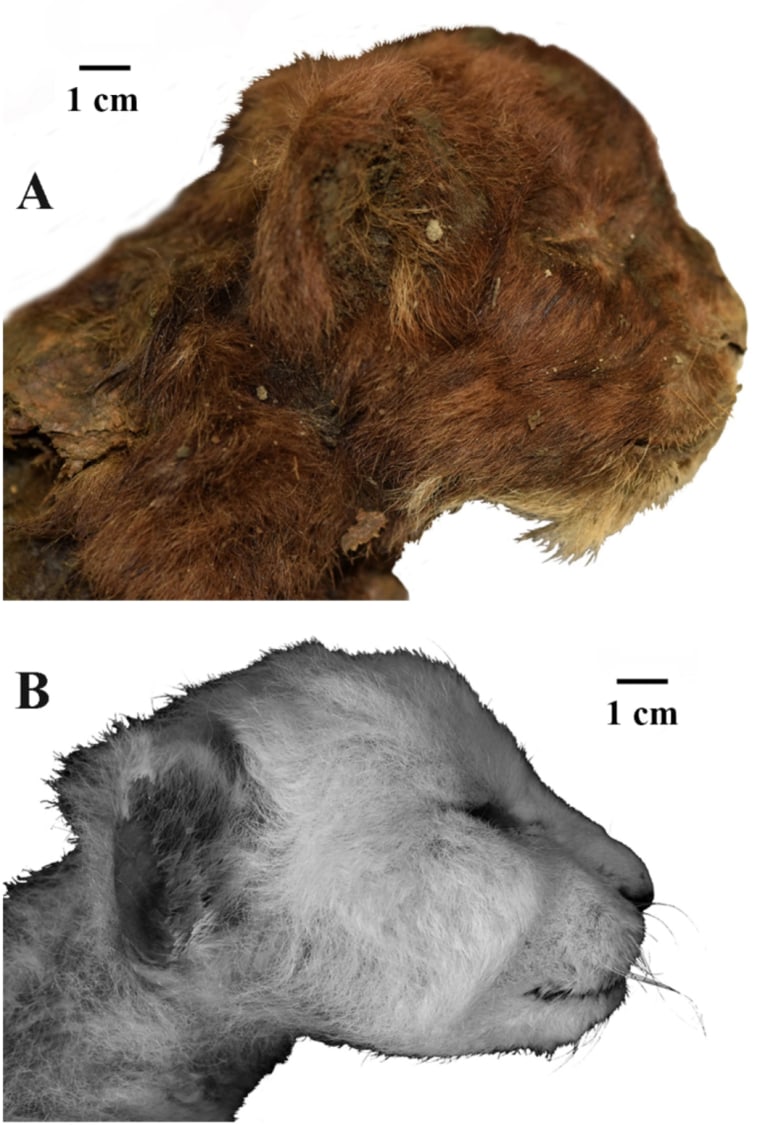
Calling all "Ice Age" lovers: The frozen remains of a 35,000-year-old saber-toothed cat have been studied for the first time in history, according to a study published Thursday in the journal Scientific Reports.
NBC News reports that the animal's mummified remains, which include its head, arms and part of its chest, were found well-preserved in Yakutia, Russia, in 2020 and determined to belong to a cub around 3 weeks old, per the study.
The young cub's most notable characteristics are its small ears, long neck and front arms, dark brown fur, and large mouth opening, the study authors wrote. When compared with the remains of a modern lion cub of a similar age, it was determined that the cat mummy shared characteristics with the subfamily Machairodontinae, specifically the Homotherium genus — cats with sharp, curved saber teeth that existed around 12 million to 10,000 years ago in North America and Europe.

Get top local stories in Philly delivered to you every morning. Sign up for NBC Philadelphia's News Headlines newsletter.
Compared with the modern lion cub's remains, the Homotherium cat's ears are up higher on the skull, and its mouth opening is about 11% to 19% larger, according to the study. Its neck is also "longer and more than twice as thick" as the modern cub's.
For "Ice Age" movie franchise fans, the description of the saber-toothed cat might sound familiar. The character Diego, a saber-toothed tiger, has very similar traits to the 35,000-year-old cub.
This marks the first time remains of this kind have been studied.
U.S. & World
Stories that affect your life across the U.S. and around the world.
“For the first time in the history of paleontology, the appearance of an extinct mammal that has no analogues in the modern fauna has been studied,” the study authors wrote.
The study's corresponding author did not immediately respond to a request for comment.
This story first appeared on NBCNews.com. More from NBC News:



